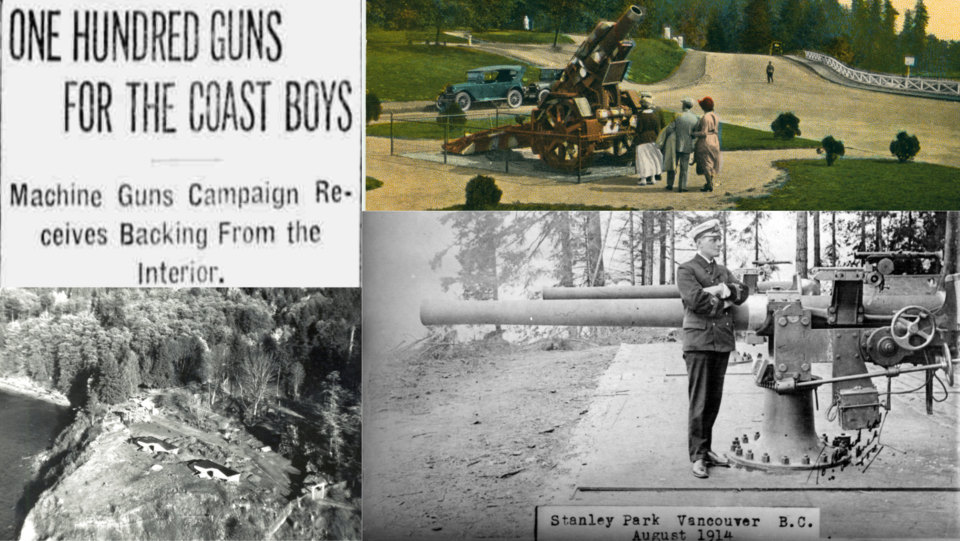Military forces have a long history of involvement in and around Vancouver.
From Richard Moody, (B.C.'s first lieutenant-governor and a colonel in the Royal Engineers at the same time) to Jericho Beach being used by the air force to the "stone frigate" that still exists in Coal Harbour, military forces (be it British or Canadian) have been integral to the city now known as Vancouver.
Here are five things you may not know about some of that involvement. A lot of them have to do with big guns in Stanley Park.
1. Stanley Park was originally set aside for military use
Before B.C. joined Canada, and before Vancouver was founded, Stanley Paek had already been marked for preservation.
It wasn't by conservationists trying to save a piece of local nature, though, it was for the Royal Navy to have access to good lumber for ships, in particular straight trees for masts.
In fact, when Stanley Park was created, the land wasn't given to the city by the military or federal government, it was leased for $1 per year. In 2006 the lease was updated by Parks Canada so it wouldn't have to be renewed.
2. They put a captured Howitzer at the entrance to Stanley Park
Uncommon for parks in Vancouver, Stanley Park has a cannon: the 9 O'Clock gun.
But it's not the only one that's been put there. After it was captured by Canadian troops during WW1, a huge German Howitzer was shipped from Europe to the Georgia Street entrance to the park.
The weapon was a bit of a sight and a postcard was even produced showing it.
3. Two six-inch guns set up for WW1
While WW1 is called a "World War" the west coast of Canada wasn't near any front lines.
That said, due to concerns about a German fleet in the Pacific, an installation was set up in Stanley Park with a pair of giant guns. For context, "six-inch guns" refer to the width of the gun barrel.
They were manned by volunteer naval reserves.
4. The Teahouse restaurant was a military garrison
Before being a fine dining restaurant, the building known as the Teahouse now was actually part of a military installation at Ferguson Point which included large guns.
"After the war, the house was briefly used as a residence for the military and then in the 1950’s it opened as a teahouse," states the Teahouse's Facebook page.
5. Locals raised money for machine guns
At the outbreak of WW1 machine guns were a relatively new, yet revolutionary, weapon.
With a relatively small military at the beginning of the fighting, Canada's troops weren't all outfitted with everything they might want.
So in 1915, in an effort to support the troops, locals started fundraising for machine guns, which cost about $1,000. That's about $25,000 in 2024.
While efforts in B.C. appear to have started in Vancouver, other communities across the province followed suit.



